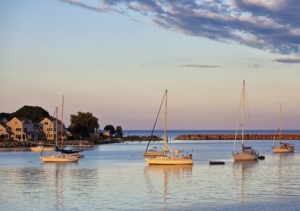Not many people know this, but there’s an island just off the coast of Michigan that’s got one of the richest histories in the United States. It’s called Mackinac Island, and of the 35,000 islands in the Great Lakes, it stands as one of the most interesting.
On Mackinac Island, you’d have no idea you were in the modern century (aside from someone pulling out an iPhone). Cars have been prohibited since 1898; you’ll be surrounded by bicycles and horse-drawn carriages! The island uses 500 horses for transportation needs.
The island’s history runs quite deep, too.
Indigenous to the islands were the Anishinaabe (Ojibwa) Indians. They believed Mackinac Island was the home to the “Great Spirit”, which in their language was the Gitchie Manitou.
Thus, Mackinac was a sacred place for tribes around the area. They used it as a gathering place for worship and presenting offerings for the Gitchie Manitou, as well as performing ritual burials for tribal chiefs.
It wasn’t long until Mackinac became a desirable territory for incoming foreign settlers. First came the French missionaries, who turned the island into a fur trading post. Years later, the British took over after the French and Indian War. They used the island for militaristic reasons, and built Fort Mackinac in 1780.
The United States got involved in 1783, acquiring the Strait of Mackinac thru the Treaty of Paris. The British officially evacuated the Great Lakes region in 1794, but captured the fort during the War of 1812. The Treaty of Ghent forced the island back to the US, who has remained in control of the island since.

With the establishment of Mackinac for military purposes, tourism didn’t really take off until after the Civil War. Here’s a fun fact: Mackinac Island was America’s second national park (Yellowstone National Park being the first). Once the Island was established as a National Park, the Grand Hotel was built (still standing since 1887!), and wealthy Americans started developing summer homes on the island.
Now, the economy is dominated by tourism. The tiny, 4-mile island sees nearly 15,000 visitors per day during the peak seasons.
And how do those visitors stay fed? Fudge! This is a highlight of Mackinac Island, and you’d be crazy not to try some of their world-famous fudge. The island has 14 different fudge shops, some dating back to the 1880s.
Mackinac Island’s extensive history and quaint charm make for one of the most beautiful and under-the-radar tourist destinations in America.
It’s also one of our customer’s favorites for Great Lakes cruises, and part of an unforgettable 7-night journey. These cruises book fast, so if you are interested, get in touch with one of our agents today!


